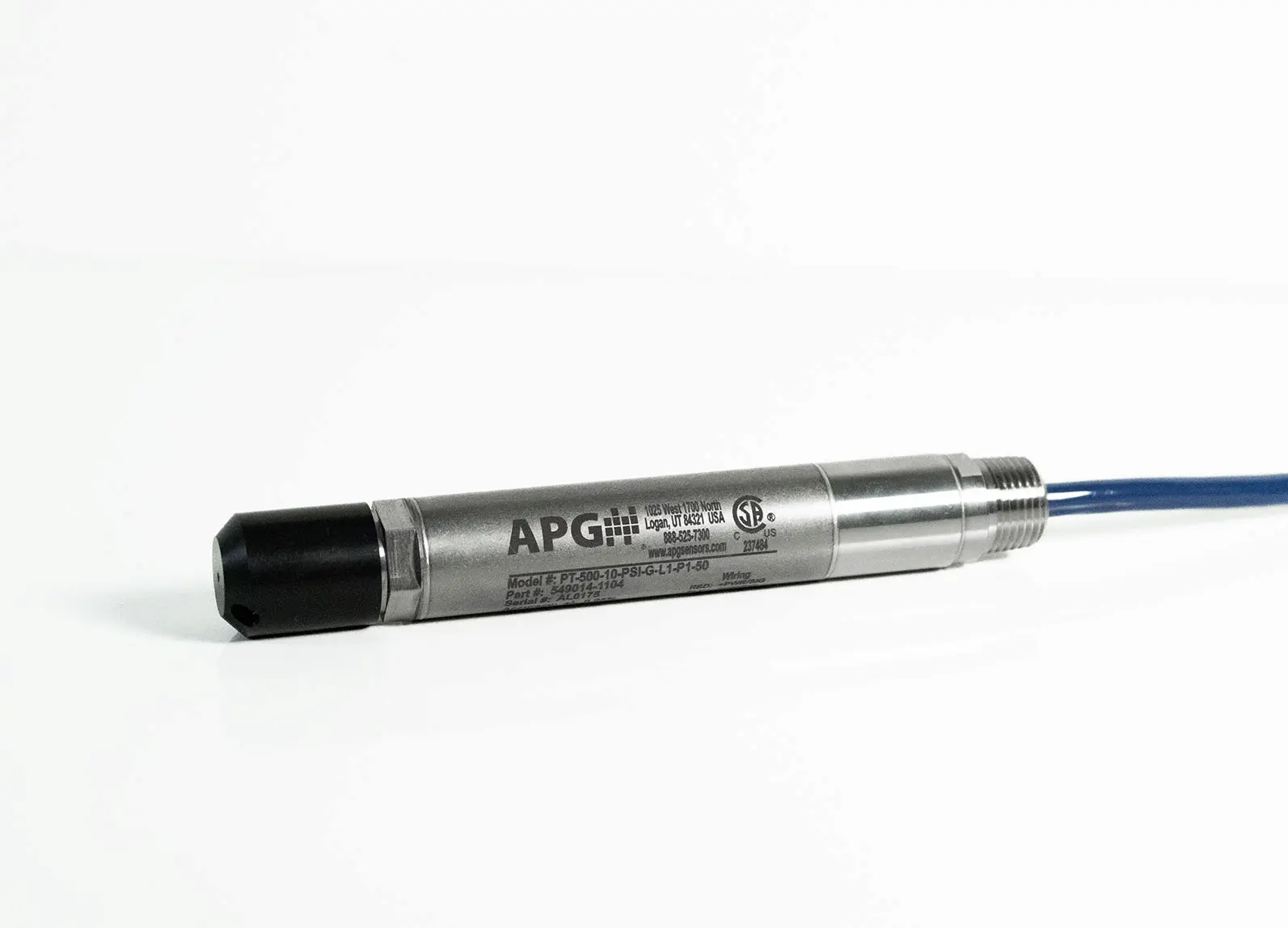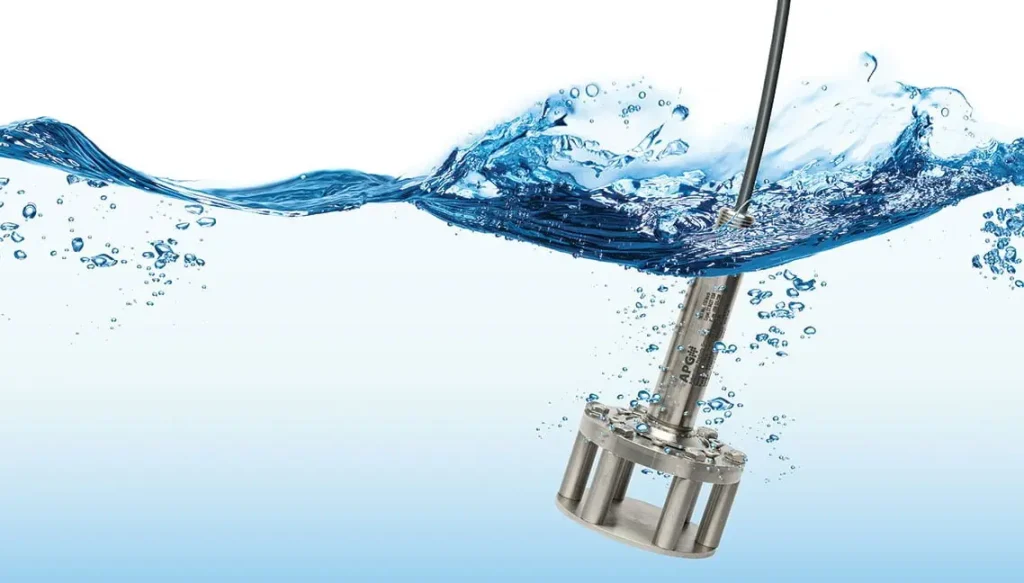Pressure sensors can be used to measure more than just pressure—they can also be used to measure level. At Automation Products Group, Inc. (APG), we’ll answer how pressure sensors can measure level.
Using a pressure sensor to measure level is premised on water having a uniform weight at a given depth. A water column of a specific height will always exert the same amount of pressure on a transducer. Since weight is a force, and pressure is force applied over an area—in this case, the area of the transducer—the pressure reading from the transducer is taken and translate it into a level based on the liquid’s specific gravity.
Pressure in partial-still water (hydrostatic pressure) is calculated by multiplying the density of the water by gravity and the distance between the point in question and the surface of the water (P=ρgh). This equation is turned around to solve for said distance or depth (h=P/ρg). Since density and gravity are constant for water, the measurement of our pressure sensor converts quickly and accurately to a level measurement (2.31 is turns PSI into feet).
The Variables In Water Level Pressure Sensors
A pressure sensor only needs to account for any depth below its placement level. Any water above the sensor is already accurately measured.
Gravity does vary with elevation. But not so much that any one sensor needs to treat gravity as anything other than a constant.
Air Pressure and Specific Gravity
Changes in air pressure will change the absolute pressure. But absolute pressure is gauge pressure plus atmospheric pressure (Pabs = Patm + ρgh). Unless the sensor is designed to measure absolute pressure, changes in atmospheric pressure won’t affect the level reading. Most submersible pressure gauges are vented, allowing the transducer to physically adjust to air pressure.
For specific gravity, it’s a ratio of one substance’s density to water’s density. When monitoring the water level, no adjustment is necessary. For monitoring a different fluid, an adjustment can be arranged with the sensor’s manufacturer to account for the difference. Specific gravity is also affected by large swings in temperature. This is easily fixed with temperature compensation internal to the pressure sensor.

Benefits Of Using A Water Level Pressure Sensor
Measuring levels with pressure is accurate, stable, and effective in non-pressurized tank environments. Pressure sensors themselves are less expensive than the purpose-built alternatives. Using pressure sensors is easy and void of any mentionable complexity. Additionally, there are a host of process fittings for practically any mounting need, even 3A compliance. This makes liquid level measurement with pressure sensors is a good way to go.
There are certain applications where using a pressure sensor to detect liquid level is particularly appropriate. Turbulence, foam, vapor layers, and physical obstructions are all common occurrences in tanks and liquids. Pressure sensors aren’t affected by any of these and a great alternative in such applications.
For pressurized tanks, using pressure sensors is still a viable option. However, it’s more complex and typically requires more than one sensor.
Still have questions about using a pressure sensor for level monitoring? Let us know. You can call us, email us at sales@apgsensors.com, or engage our live chat for more information during business hours. You can also simply drop by our contact us page. We’d love to hear from you.
WRITTEN BY

Sami T.
Sami Thompson is APG’s Marketing Technical Writer and has been with the company since 2022. With a master’s degree in English from Utah State University and a 40-page thesis publication under her belt, Sami has a demonstrated strong writing background. In her free time, Sami enjoys reading and birdwatching.


